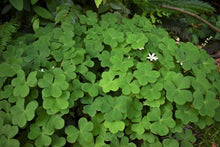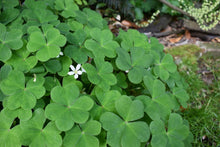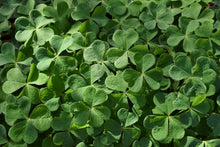
Oxalis oregana
Oregon oxalis (aka redwood sorrel) is a semi-evergreen, highly attractive ground cover ideal for woodland gardens. In shady undergrowth, its cheerful shamrock-shaped leaves stick around for most of the year, forming delicate carpets reminiscent of fairy tales. Singular small white blooms suspend above the leaves on a slender stalk.
- Plant type/canopy layer: deciduous, perennial, herbaceous plant
- Size at maturity: up to 8” tall, spreading laterally via rhizomes
- Light requirements: part sun/part shade, full shade
- Moisture requirements: moist to dry soil, well-drained
- Bloom time: March - September (generally April - May in the Portland Metro area)
- Growth rate/ease: medium growth rate, easy to grow
- Wildlife support: flowers attract and provide nectar for adult butterflies, bees and other insect pollinators; overall plant is a caterpillar host and larval food source for native butterflies and moths
- Native habitat/range: common in moist Douglas-fir and coast redwood forests from the western Cascades to the coast, from British Columbia south to California. Portland Plant List - yes.
- Special features & uses: groundcover; semi-evergreen; tangy leaves are edible in small quantities since they contain mildly toxic oxalic acid; landscape uses include woodland gardens and shady pollinator gardens
Gardening with Oregon Oxalis: Oxalis is ideal under conifers and other overstory trees and shrubs and can spread happily in acidic, well-drained soils that are high in organic matter. It pairs well with native ferns, salal, snowberry and countless other shade-loving small shrubs and perennials.
Photo Credits 1: Tara Lemezis, Tiny Seed Photography
Photo Credits 2 - 4, 7 - 9: Nikkie West, Sparrowhawk Native Plants
Photo Credits 5, 6: Hoddick Photography


















